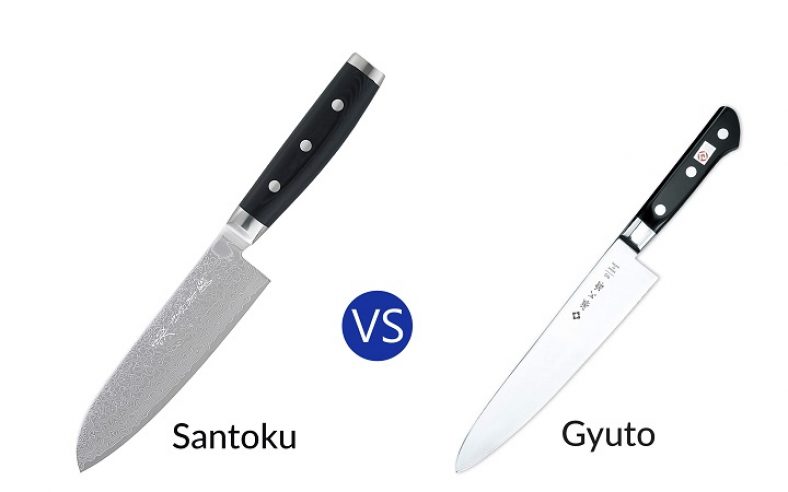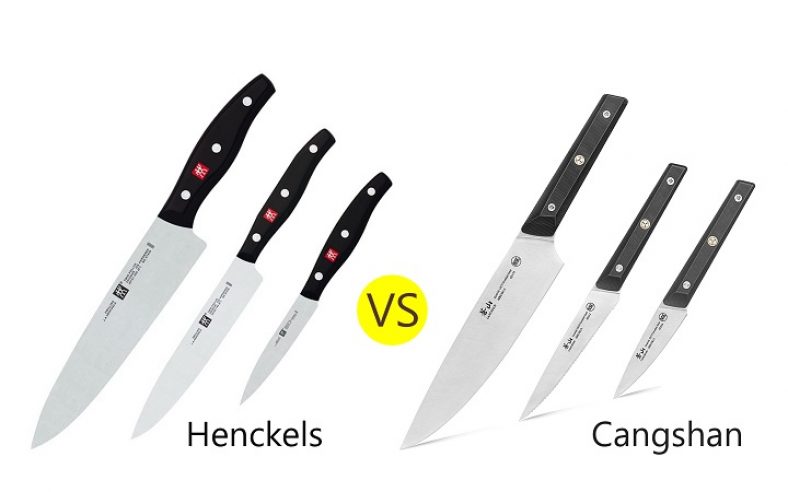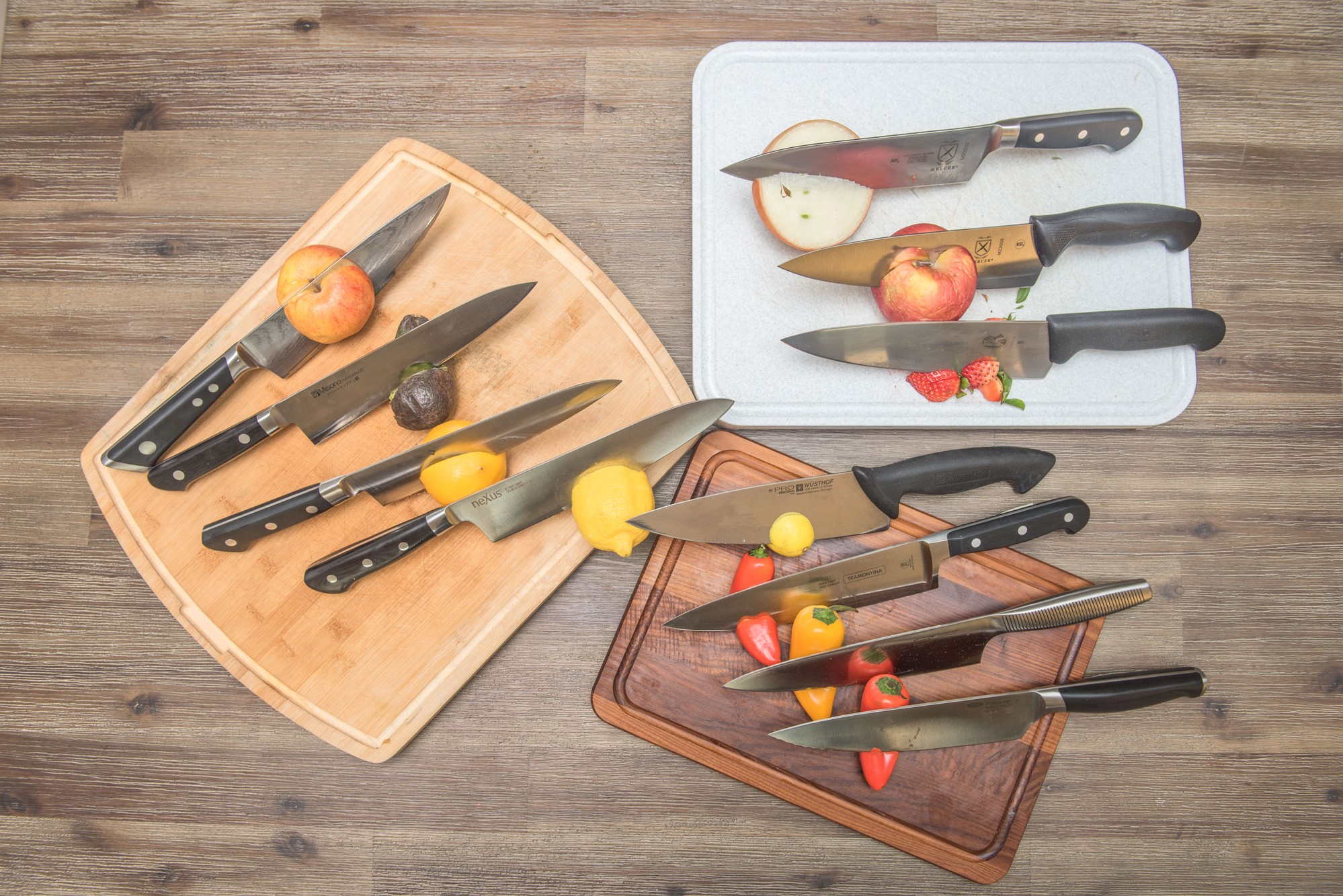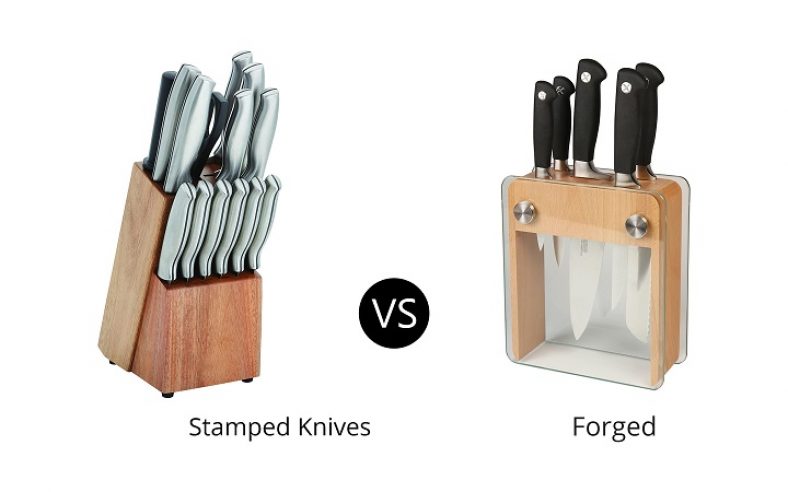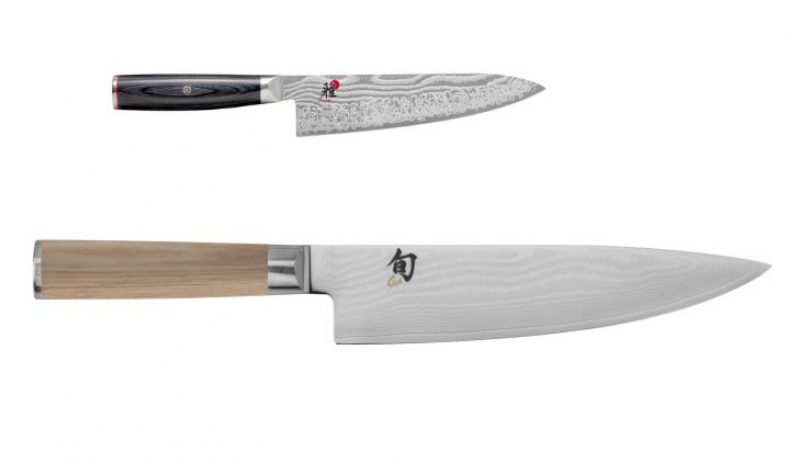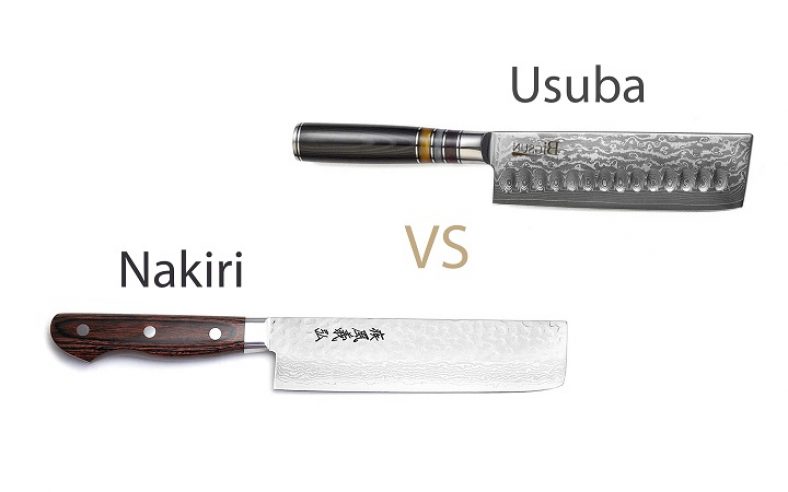You’re going to choose from the most famous Japanese knives: Gyuto and Santoku. People love to use them as a kitchen knife. Moreover, Japanese knives are exclusive to regular knives. Also, a knife specialist may not understand about the Japanese knives’ name. Essentially, they use different significant steel and edge grinds. Through this content, we will present some essential differences between the different types of knives. It’ll show the better comparison of Santoku Vs Gyuto brands to decide with ease to find your preferred one.
Santoku Vs. Gyuto: Features Compare
Firstly, the Santoku knife has two primary differences from the chef’s knife. Also, it has a flat tip that cuts things stably. Secondly, it has no arc so that it provides some knife technical issues.
However, to get the features of Santoku and Gyuto knives read the full content to the end.
Santoku Knife Features
Now we will discuss the features of Santoku knives. Already we present several articles about this knife on the Blade Advisor. Mainly, this knife is famous for TV chefs in the United States.
Indeed, this is a multipurpose knife; that is why it is the competitor of the regular chef’s knife. Moreover, it has a thin and sharp blade that cuts things accurately. Also, it is very light in weight. As a result, people can use it for a long time without getting any pain.
Length of the Blade
Usually, the length is 8 to 10 inches of the chef’s knife. On the other hand, the range of the Santoku is 5 to 10 inches. From the expert point of view, Santoku has a standard blade size than any kitchen knives.
Also, the expert considers it as an average size. As a result, every chef can use this knife. Even a short-handed chef also can use this knife easily moreover, as it is a lightweight knife, that is why it is easy to handle it.
Cutting Style
Santoku has an appropriate size of the blade. Generally, the size of the edge is 5 to 8 inches. This feature works amazingly for the short-handed chef.
Besides, they can cut the vegetables, parsley and so many greens items. On the other hand, a Gyuto knife has an 8 inches long blade that helps to chop sizable vegetables or fruits like watermelon.
The Quality of Handle
One of the essential parts of the knife is a handle. Indeed, simplicity is the best for every case. Traditionally, people love wooden handle. But the modernists love the fiberglass handle.
Moreover, there is a variety of blade lengths available. Among them, some blade has the edge of the hollowed grantor. That helps to avoid the moist items form the sticking.
Also, the range of the blade is 13 to 30 centimeters. But it is better to use up to 18 centimeters. Lastly, we will present the cost of this knife. The price of the Sntoku knives varies on the features.
Gyuto Knife Features
Gyuto is the Japanese form of the western knife. It is very comfortable to use in your kitchen. Typically, people did not listen to this knife before. But nowadays it is familiar with using in the household work.
However, it has a little different than regular Japanese knives. Such as, it has a wooden handle, and the blade has a few hard plates of steel.
Length of the Blade
The length of the Gyuto knife is lighter and thinner than a western knife. Also, the point of balance of this knife is forward to the tip. Most importantly, these are the features that represent the Gyuto knifes agile and accurate to use.
Generally, the length of the Gyuto blade is 180 to 300 mm. but it can be long up to 360 mm. Moreover, for the home cooks, you can use 180 mm blades to highest 210 mm.
On the other hand, professional chefs need to use at least 240 mm blades to most top 270 mm blades.
Cutting Style
As we mentioned before that Santoku has an arch blade, and it can cut differently. Also, it is large in size and a lightweight knife. As a result, it is easy to handle and cut the items.
Similarly, the cutting style of Gyuto is also amazing. Besides, it has an appropriate size of the blade that cuts the vegetables and so many things nicely.
The Quality of Handle
The shape of the Gyuto and wester knife is the same. Also, the usage of these two knives is the same. Both blades have one double bevel handle. Indeed, there is no fundamental difference between these two knives.
Santoku Knife Vs Gyuto: Similarities
Firstly, we will discuss the similarities between the Gyuto and the Santoku knife. Mainly, these two knives have the versatility to do every significant task. Mostly, one knife can do one thing only. For example, the Deba knife only cut the filleting fish.
Also, the Nakiri knife is famous for cutting the vegetables. Besides, the Yanagiba knife is renowned for cutting the fish flesh. Also, bread knives only cut the bread. Honestly, these are the knives that work amazingly in the individual task.
But if you want to use them for another purpose, then they do not work correctly. Therefore, to cut the rest of the items, one should buy another knife. On the other hand, you can cut anything with the Santoku and Gyuto knives.
Additionally, one can call them a multifunctional knife. Besides, the two knives are more extensive in the heel area and narrow to the tip. Also, the tips are very sharp and curve. Moreover, the heel area of the blades is flat. As a result, one can cut things with a slight shaking motion.
Furthermore, the materials of these two knives are also the same. Each blade has stainless steel, ceramics, and carbon steels. Besides, each handle has the same elements as plastics, wood, and stainless steel.
Most importantly, the manufacture of the Santoku and Gyuto is different than the other knives. Usually, the regular knife has the same angle, but these two knives have a single and double bevel. As a result, one can use these two knives to cut almost everything in the kitchen.
What Is Differences Gyuto Vs Santoku Knife ?
Before we discuss the similarities of these two knives, now to get the dissimilarities to read the below article.
Origin of the Gyuto Knife
Here we will discuss the differences between Santoku and Gyuto. Firstly, Germany invents the Gyuto knife in the century of 19th. Besides, French and Germany imported the chef’s knife from Japan.
Then Japan developed the Gyuto knife by following the features of chefs. There are some similarities between the chef and the Gyuto knife. Moreover, the derivation of the Gyuto knife is France and Germany.
Additionally, the blade of the chef specially made for cutting meat. But the updated version of this knife can cut every item. Not only meat, but you can also slice vegetables, fruits, and fish.
Origin of the Santoku Knife
The origin of the Santoku knife is Japan. Santoku is the updated version of a Nakiri knife. First, the Nakiri knife was best for vegetable cutting. Besides, it was the famous kitchen knife for the people. But the food habit becomes change after world war 2.
From that time, people cook different significant items besides vegetables. Then they felt to invent versatile knives. Also, they considered that the Gyuto knife is quite challenging to use then Nikiri one.
After that, they invent the Santoku knife by following the Nikiri knife. Mainly, the Nikiri knife was best for the vegetables, but the Santoku is best for every significant food.
Differences in shape
The shape of these two knives is almost similar. It is quite challenging to find out the dissimilarities.
Now we will provide slight differences between them. First, the Gyuto knife has an extra edge of the curve, and the spine is less.
Thus, the Gyuto knife has a little sharper tip. Besides, this knife can cut the meat quickly. On the other hand, the Santoku knife has a suggestion of sheep foot. Also, this knife tip is less sharp, and the edge is flatter than Gyuto.
Moreover, it is easy to cut the vegetables with this knife. Additionally, the length of the Santoku blade is highest 7 inches that mean 180 mm. On the other hand, the most top range of the Gyuto blade is around 12 inches means 300 mm.
Most importantly, the Santoku knife specially invented according to the kitchen of Japanese. Japanese think that the length of the knife blade depends on the kitchen size. Also, they consider the knife blade depends on the chopping board.
One should take the small blade than the board. Then the cutting will be easy to manage and fast. Also, the Japanese prefer an average length blade for the long and short-handed people.
Moreover, the blade weight is also a big issue. Japanese people think that the Gyuto knife is a little heavy than Santuko. That is why it is less comfortable to chop things.
Instead, the Santoku knife is light in weight and easy to cut the items. Lastly, we mention the differences according to the above discussion. But there is a negligible difference between these two knives.
Read More:
- Santoku Vs Gyuto Knife
- Cangshan vs Henckels Knife
- Kamikoto vs Shun Knives
- Yoshihiro vs Shun knives
- Cutco vs Wusthof Knife
- Shun vs Wusthof knives
- Dalstrong vs Shun Knives
- Mercer Vs Victorinox Knives
Which Is Knife Better: Santoku Or Gyuto?
From the above, you get all the difference between Gyuto and Santoku. Firstly, one should select a knife according to your need. Several people think a short Gyuto knife will be better than the Santoku knife. Also, they love the rocking of this knife, and they believe it helps them to cut fast.
Several people consider the Santoku knife is best rather than Gyuto. Also, they like it for the lightweight blade. Besides, it can cut verities things differently. However, if one has a Gyuto knife, then you can purchase a Santoku for the kitchen.
Indeed, both knives are amazing. One can purchase both of them because they are perfect in different works. A Gyuto knife will provide you a long and sharp blade. Besides, Santoku will offer you the average length of the blade and quick chopping.
To buy both knives, one can receive the best facilities for the knives. Finally, these two knives are multifunctional and work properly. So, one can select anyone from them also.
Price
We mentioned it before that Santoku knife’s price is less than Gyuto knives. If one is on a low budget, then go for the Santoku knife. You will get a best-quality knife, but one can save money by purchasing it.
But if you like the rocking motion of the knife, then go for the Gyuto knife. Though the price of Gyuto is much more than Santoku, there is no way to leave it. You will not get the features of Gyuto is the Santoku knife.
Santoku Vs. Gyuto: Conclusion
We are at the end of this content. Hopefully, you get all the information about the Santoku vs Gyuto.
Besides, one gets the features, length of the blade, price, and the workability of these two knives.
It’ll help you to select the best knife for the kitchen. At last, we want to tell that fix the budget and choose the best features then go for your desire knife. In our opinion, Santoku is winner in this debate.

